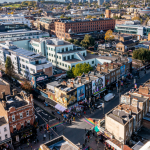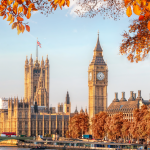Lambeth is a high profile local authority which has experienced enormous change in recent years. The scale of new investment – particularly in the north of the borough – is vast, and has seen the skyline transformed.
Home to 322,000 people, the numbers living in the borough have risen over the past decade. Between the last two censuses, Lambeth’s population increased by 5% with the ONS declaring the borough the fourth most dense in London – on average, 85 people live in each football pitch sized area of land.
While Lambeth is officially a ‘central’ London borough, that description masks a somewhat more complicated geography. On a map, it is a longish blob, spreading from the Thames in the north to the hills of Crystal Palace in the south. It is also home to major institutions – St Thomas’s Hospital, the South Bank arts complex and Oval cricket ground – with diverse and vibrant communities spread across Vauxhall, Clapham, Brixton and Streatham. Around two in every five residents are Black, Asian or minority ethnicities – roughly one in 10 are LGBTQ+.
The borough has a long and chequered political history, albeit in more recent times it has become known for moderate and efficient leadership. Controlled by Labour since 2006, the current leader – Cllr Claire Holland – has been a councillor (for Oval ward) since 2014, and at the helm since May 2021.
The largest development in the borough in recent years is also one of the largest in London, if not the whole country. And it’s one which straddles the border with neighbouring Wandsworth at Vauxhall Nine Elms. No one passing through the area can fail to be amazed at the speed at which new towers have shot up, and it’s now served by its own Tube line extension.
For Holland, there is one enormous final piece of the regeneration jigsaw that is missing – doing something about the “dreadful” Vauxhall Gyratory. “At the moment, what we’ve effectively got is a motorway running through the heart of Vauxhall. People living on one side are split from those on the other. It was always part of the overall regeneration project that we’d do something about it”, says Holland. The recent scheme to remove traffic from the Strand has clearly fuelled Holland’s enthusiasm – “I’ve seen what a difference it’s made, and elsewhere across London where traffic gyratories have been removed – I’d love us to create public realm in the heart of Vauxhall that gives us a more villagey feel.”
A key stumbling block is funding. Transport for London (TfL) had money in earlier budgets for removing the gyratory, but the transport authority’s well documented financial troubles since the pandemic has left the project in limbo. Cllr Holland is optimistic a solution will be found: “we’re talking to developers, to TfL and the Mayor as well as to the Government about how we make this work.”
Since the wider Vauxhall Nine Elms scheme first got going in the late noughties lots has changed. Not least until May 2022 it sat astride a Labour and a Conservative council. But now Wandsworth is Labour run too, how have things changed?
“We always worked with Wandsworth, even when it was Conservative. As neighbouring boroughs there were many shared challenges and I had a good working relationship with Ravi (Govindia, the previous Tory Council Leader) and work closely with all our neighbouring boroughs. But I won’t deny that a party that shares your ideals is a different relationship altogether.”
Another project that crosses borough boundaries is SC1, London’s new life sciences innovation district, building on the world-class healthcare expertise around Kings, Guy’s and St Thomas’s hospitals. The council is working with neighbouring Southwark to exploit opportunities for jobs and growth that spillover from the long tradition of scientific research in the local area.
Holland’s optimism about the potential for SC1 is obvious. “We’re so lucky to have great institutions on our doorstep, and with SC1 we’re focusing on inclusive growth, that brings the benefits of new jobs and skills to the local population across both boroughs and beyond”, she said. And we’re looking closely at similar clusters in other parts of the city, to make sure we learn from what they’ve done, and build on – rather than compete with – what they’re doing.”
But with all the change that the borough has seen comes real challenges, which Holland acknowledges: “It’s about making sure you get the right kind of development if you’re to bring local people with you. What you can’t have is some new big scheme going up next door to where people live, and the local community staring up at it, not feeling the benefit.”
Affordable homes are clearly critical – Lambeth is a borough with enormous challenges. The council’s own figures reveal around 40,000 households are on the housing waiting list – 13,000 of these are families with children. Holland herself recognises this, but also that the benefits from new investment in Lambeth can be spread across the whole borough: “Yes, making sure it [new development] delivers affordable homes is crucial, but with the CIL (Community Infrastructure Levy) income, as a council we’ve got to make sure that public realm gets better, and not just in the immediate area, but across the borough.”
Holland talks about the importance of working with developers to get the right outcomes for the borough: “Lambeth stretches all the way to Gipsy Hill in the south and it’s on us to ensure the whole borough feels the benefit of new developments, but particularly that those in the immediate area see positive change from things happening right on the doorstep”.
Holland has recently taken on an additional role, in September she stepped up as Chair of London Councils (the umbrella body that represents with a united voice all 32 boroughs plus the City of London Corporation), covering for Cllr Georgia Gould (Leader of Camden Council) who is on maternity leave. Asked about the role, Cllr Holland describes it as “a really exciting opportunity, albeit not the circumstances in which I’d have ideally chosen to do the job. There are so many huge challenges for London’s government at the moment but being able to work with all of the leaders shows how we can come together and work across parties when it is really important”.
As London heads towards 2024 when the capital goes to the polls in the Mayoral election and probably a General Election too, it’s obvious Cllr Holland’s role at London Councils is going to become even more important.
This interview was conducted by London Communications Agency on behalf of the London Property Alliance as part of its curation of the monthly Central London newsletter.
Read more from our London Leaders series here.


